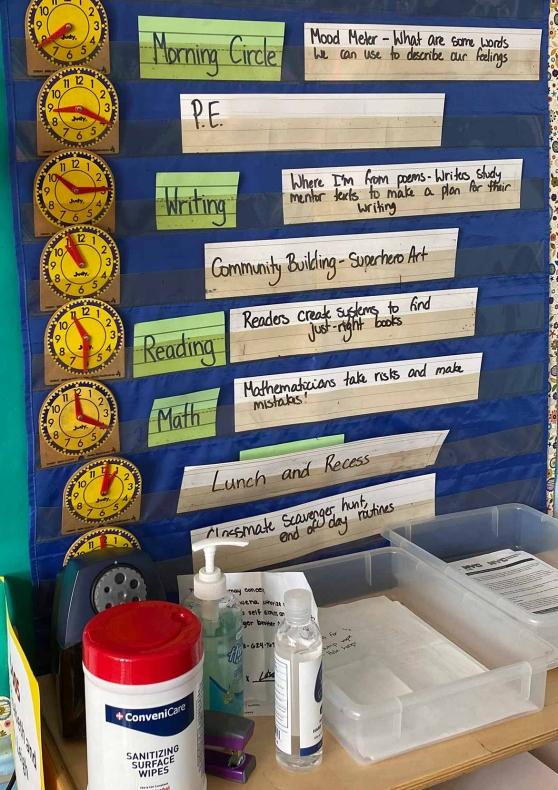
Having a warm and inviting learning environment will help you connect with your students, especially those who are new to the school or even the country. Here are some suggestions for how to make your students feel safe and welcome in your classroom at the start of the new school year.
Create a physical space that gives students a sense of belonging. What books do you have on the shelves? If you have students who have recently arrived in the United States, consider stocking some texts in the students’ native languages or books in English about their home countries.
It’s also a good idea to post a visible daily schedule. “Students feel more comfortable when they know what is going to happen throughout the day,” said Lindsay Colon, a Teacher Center field staffer. This predictability is especially helpful for English language learners.
Give elementary students the opportunity to help set up the classroom. This participation will give them a sense of ownership of their learning environment.
A classic first-week activity for younger students is having students draw portraits of themselves as superheroes, emphasizing their “superpowers.” You could then display these portraits prominently in the classroom. Define superpowers broadly — you can be a SuperReader, a SuperDogOwner, a SuperMinecrafter. What’s important is that students communicate their own positive self-conception.
Plan activities that celebrate personal history and culture. As an early activity, Colon suggests that students research their names. Learning the story of one’s name, why it was chosen and where it comes from is a great way for children to take pride in their names. It’s also an opportunity for students to teach others, including you, the correct spelling and pronunciation of their name.
Also consider an activity or unit that encourages kids to bring in objects that represent their home cultures, which will help kids from all backgrounds feel welcomed.
Help students get to know one another. It’s also helpful to facilitate peer relationships at the start of the school year.
Niketa Hyder, a special education teacher who teaches math at Edward A. Reynolds West Side HS in Manhattan, often kicks off the new school year by playing “Four Corners.”
For this game, you make four signs, one that says “agree,” one that says “strongly agree,” the third “disagree,” and the fourth “strongly disagree.” You post one sign in each corner of the room. Then you call out opinion statements, such as “Nicki Minaj is a better rapper than Cardi B.” Students will move to the corner that best fits their opinion on the subject. You should allow students a few moments to discuss and then move onto the next statement. Students can also take a turn creating statements for the class.
“These kinds of games help students identify commonalities among themselves,” says Colon.
Include students in establishing rules. Students are more likely to follow classroom rules if they play a role in determining them. As a whole class, discuss the question: “What do we need to thrive at school?” It’s a broad topic, but eventually you’ll narrow it to a few standards of behavior that help everyone succeed. Students might say, “Keep your hands on your own body” or “one voice at a time.” You can remind the class of these community-created rules whenever someone is getting out of hand.
Your school colleagues are a great resource, too. Ask them how they establish routines and build rapport with their students.